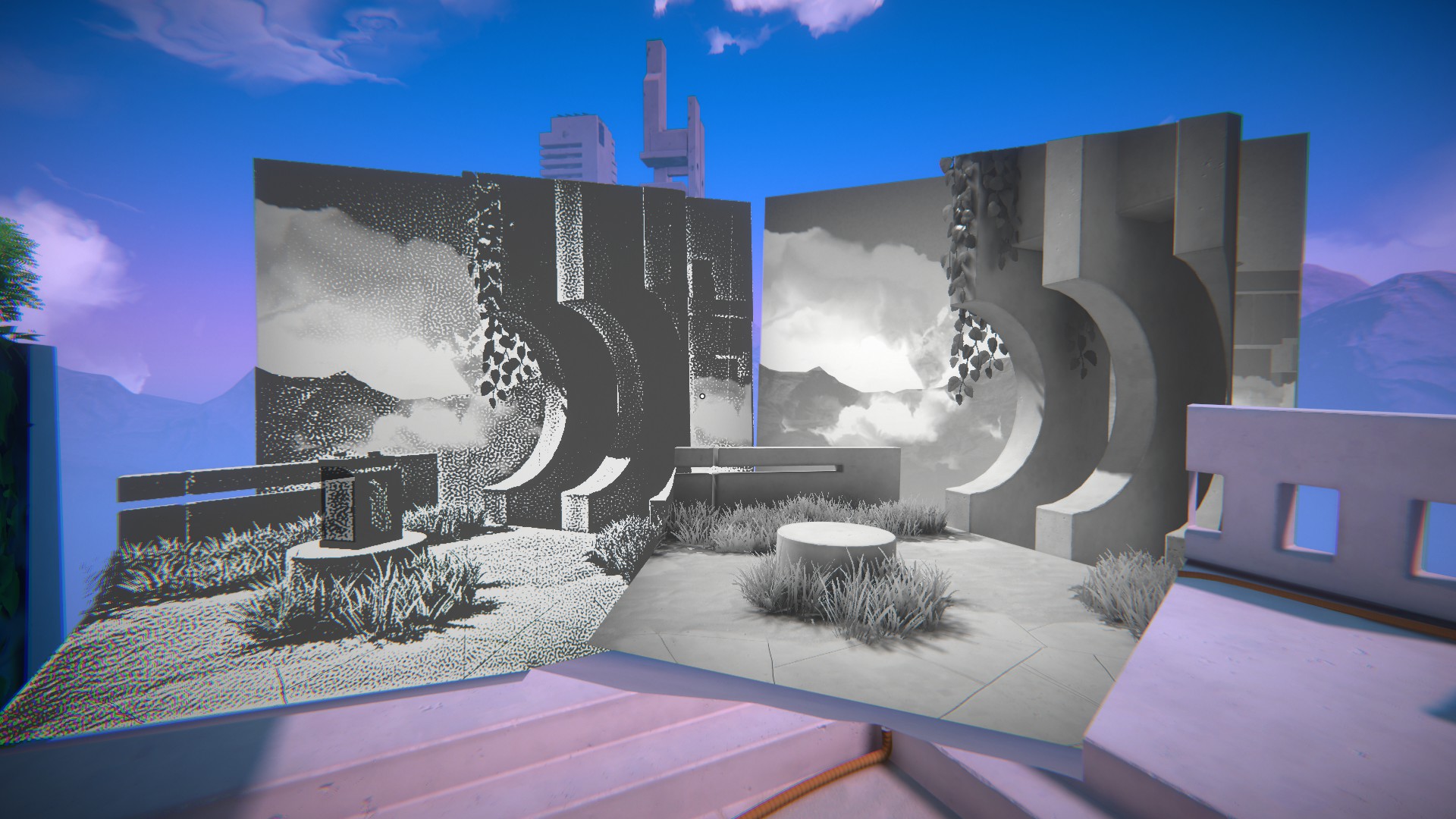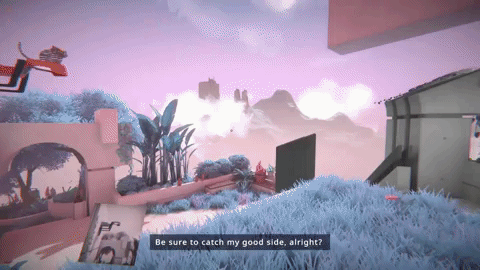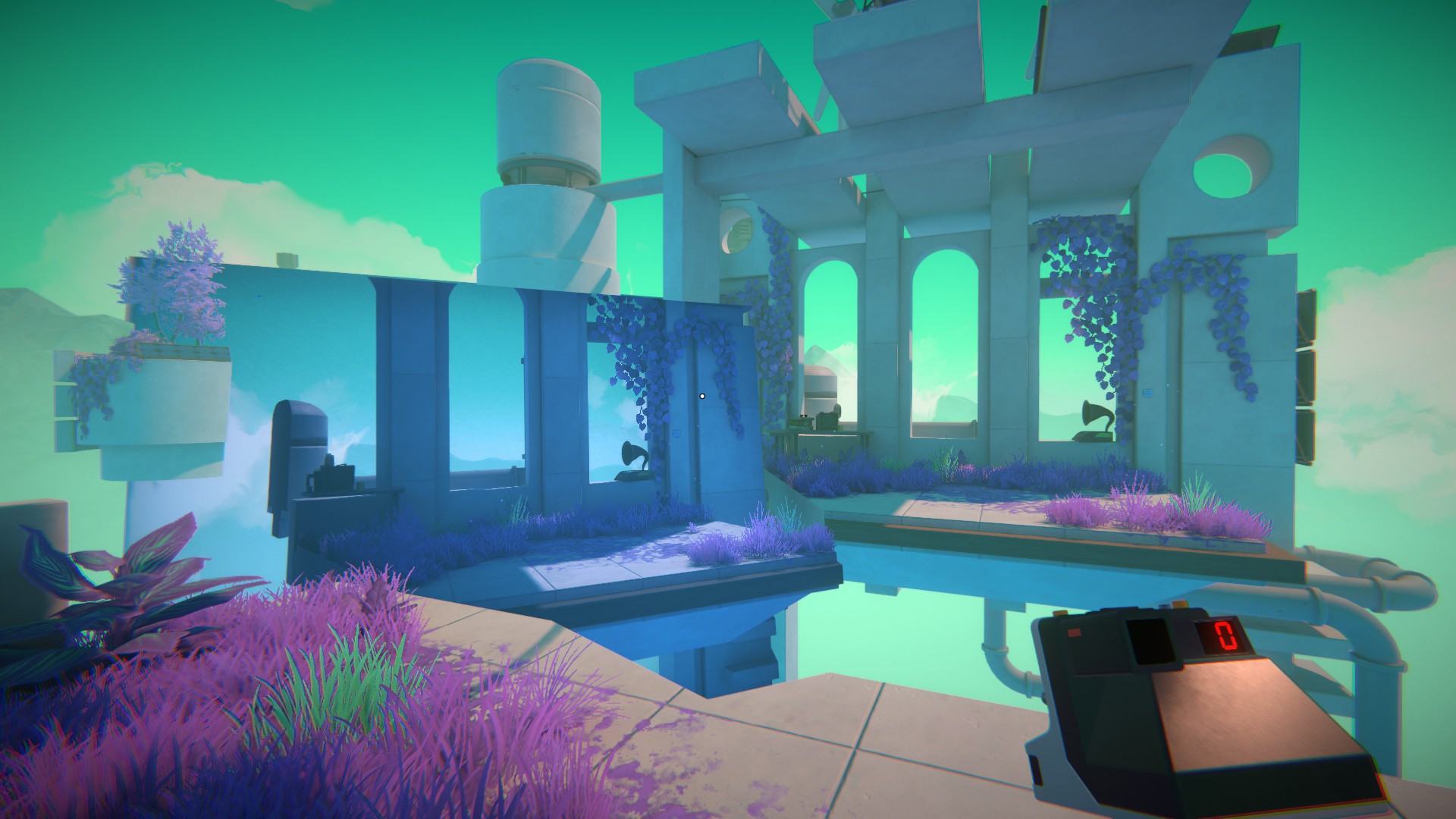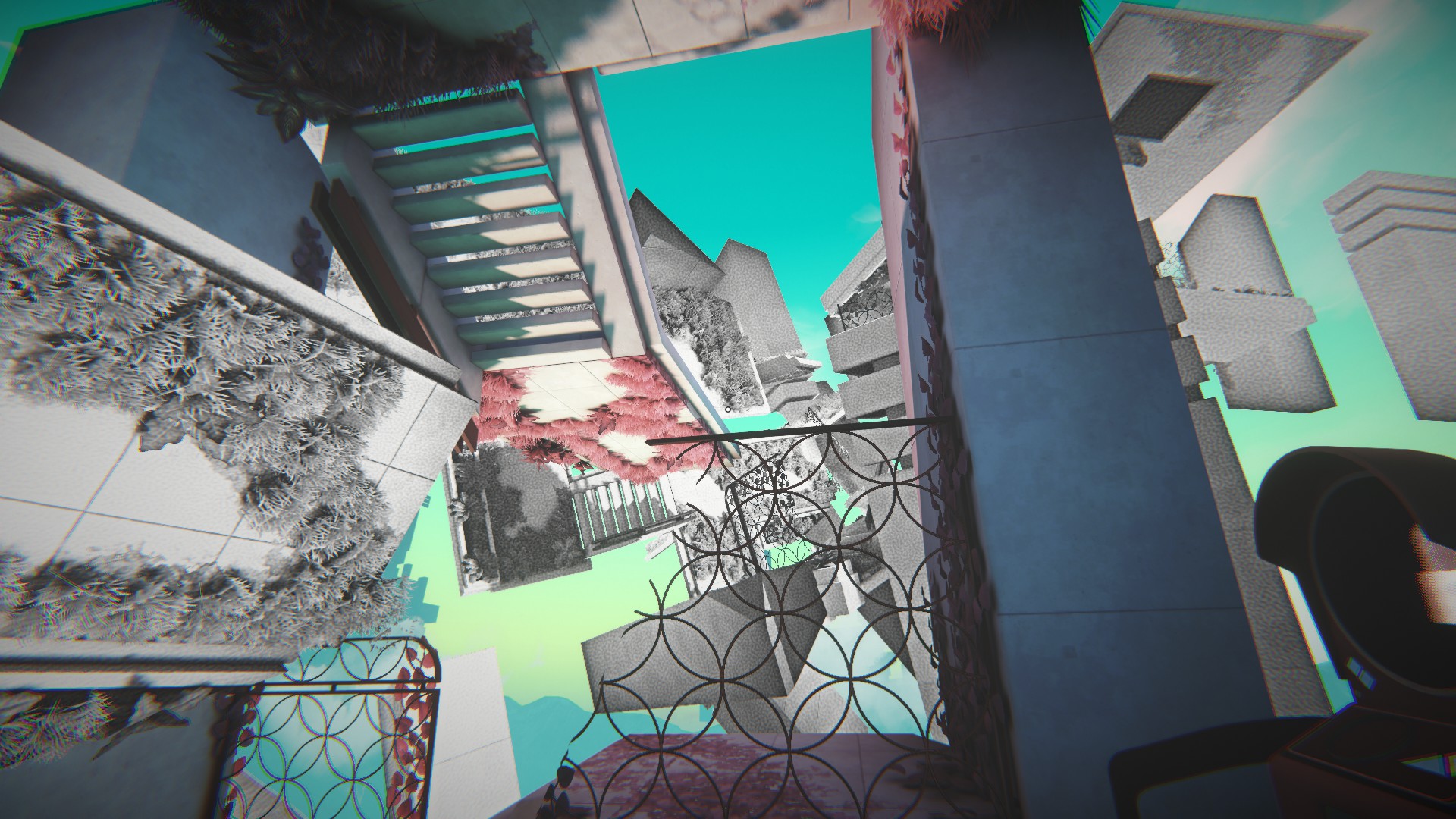
What is it? A clever puzzle game built around the ability to turn 2D pictures into 3D objects.
Release date July 18, 2023
Expect to pay TBC
Developer Sad Owl Studios
Publisher Thunderful Publishing
Reviewed on AMD Ryzen 9 5900X, 32GB RAM, Nvidia Geforce RTX 3080
Steam Deck N/A
Link Official site
It's not often I would say a game needs to be seen to be believed. Viewfinder is as much a digital magic show as it is a first-person puzzle game, composed entirely of astonishing visual and space-bending tricks you've never seen in a videogame before.
The game's central gimmick is its magic camera. Take a photo of something, grab the resulting polaroid after it satisfyingly whirrs out of the side, and then hold it up and place it in the world wherever you want. Everything in the 2D photograph instantly becomes part of the 3D environment, drawn directly from the perspective you were looking at it from. It's mind-bending.
At its simplest, that could mean taking a photo of a tower, turning it on its side, and placing it so it forms a bridge over a gap. But it quickly ramps up from there, especially once you start taking photos of the landscapes created by your other photos, allowing you to stack together bizarre, impossible structures to bypass obstacles.
Your goal in each of the game's discrete levels is always the same—reach the teleporter that takes you to the next level. It's simple, but rarely straightforward. Whether the teleporter is on the other side of an impassable chasm, stuck to the ceiling, or in need of batteries that seemingly don't exist, there's always some kind of wonderful absurdity to be tackled. The first time I realised the only way to progress through a particular stage was to make a copy of the teleporter with a photograph and step through that instead, was the moment I knew all bets were off in Viewfinder's world.

Aperture science
Discovering the ins and outs of Viewfinder's unique logic is very reminiscent of the first time we all learned to "think with portals" in Portal. It's an obvious comparison to make, but it's not one I make lightly—Viewfinder's tricks really do feel as revelatory to play with as Portal's did then.
And there's more than just one great mechanic here. The camera is the star, but Viewfinder uses it as a springboard to a whole variety of optical illusions and reality-warping tools that prod and poke at your firmest expectations of how a game looks and behaves. A seemingly 3-dimensional doorway turns out to be a 2D image on a wall as you approach; a portal lets you step into a totally different art-style; a set of seemingly disconnected images on signs form a coherent picture when viewed from just the right angle, which then becomes part of the world. The strangest and cleverest twists I don't want to spoil, because Viewfinder's best moments all come in two flavours: the moment you realise what wonderful new trick has just been played on you, and the eureka realisation of how you're going to get past it.

That variety ensures there's always something new to discover in each set of levels—but Viewfinder is a small enough game that individual ideas often don't get the time they deserve. I completed the full game including all optional levels in five hours—even just for exploring the potential of the core camera mechanic that's not a lot of time, let alone everything else that's packed in here. Often I'd come out of a level thinking "That was a great tutorial for that concept, I can't wait to see what they do with it in a proper puzzle!" only to discover that… well, that was the proper puzzle, and the concept's never coming back.
Even the photograph mechanic, which is present in some form through almost all of the game, feels like it could stretch its wings far more. Messing about with the camera and seeing how far you can twist the environment is such a blast that I'd love to be able to really go wild with it in some kind of larger sandbox level, or some set of final, extra-hard challenges. Maybe even just tools for letting users make their own levels would be enough to allow some more joy to be wrung out of such a marvellous idea.

But if I'm complaining about Viewfinder not being as substantial as I wish it was, it's only because the potential here feels so big and exciting. This is the debut game from a small new developer called Sad Owl Studios. In that context, it's understandable that its Achilles' heel would be a lack of scale—and it also makes the game's triumphs all the more astonishing.
Even if Viewfinder struggles to fully realise the potential of its ideas, what's here is still absolutely marvellous. It's a brilliantly brain-twisting set of puzzles—but even just taken as a sight-seeing tour of what wonders this team is able to create in a digital space, it's still truly a must-play. If you love being surprised by videogames, give Viewfinder a try, and discover that they can still show you the world from entirely new perspectives.







